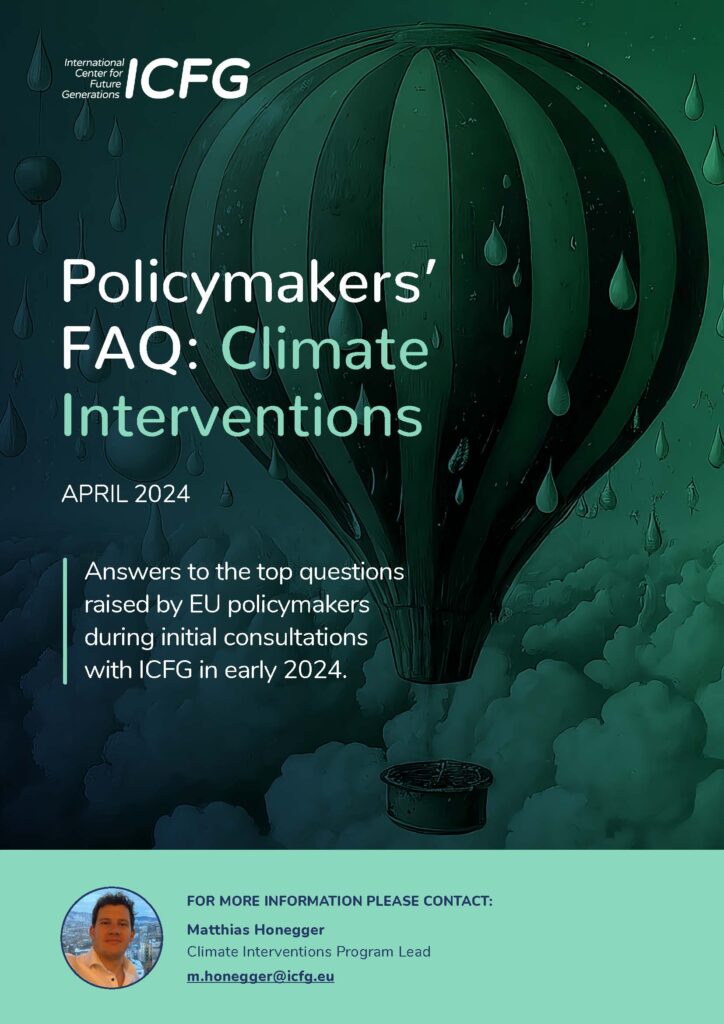Policymakers’ FAQ: Climate Interventions
Earlier this year, ICFG conducted a round of interviews with EU policymakers to assess the current gaps when it comes to technological climate interventions that are becoming more and more prevalent in political discourse. Find below a summary of what EU policymakers asked about and our initial round of responses.
The climate crisis is rapidly worsening and the world is on course for a 3°C rise, significantly exceeding the Paris temperature goals. Civilization as we know it would be fundamentally transformed. There is thus growing interest in powerful new technological interventions in the climate system aimed at limiting some of its worst effects. With the prospect of warming well above 2°C, these technologies reflect a growing sense of desperation and urgency.
One increasingly discussed and researched technology is Stratospheric Aerosol Injection (SAI). It entails spraying aerosols into the upper atmosphere continually to reflect a small portion of sunlight back into space. Theoretically, this could be deployed using today’s technology within a handful of years with near immediate though initially limited effects on the climate system. This poses a significant risk of geopolitically problematic ungoverned deployment in the short term, which is not well understood.
There is no other policy or technological option that would lower the temperature so quickly. But SAI has numerous unknowns and brings its own risks – environmental, societal, geopolitical security – as well as ethical concerns, including over justice and intergenerational equity. Political risks such as SAI being used as an excuse to delay mitigation efforts are relevant independent of its scientific risks and uncertainties.
Policymakers need to weigh the potential harms and risks of SAI with those of a world on course to nearly double the 1.5°C temperature rise this century. The recent emergence of commercial actors and private money for research are changing the climate interventions field and adding impetus to the need for public governance.
If deployed at a global scale, SAI would affect every country in the world, though not necessarily equally, and would likely be used for decades if not longer. Cautious, responsible research – transparent and publicly accountable – is essential to answer uncertainties and weigh whether the risks from SAI would be more or less (and for whom) than those of a rapidly overheating planet.

